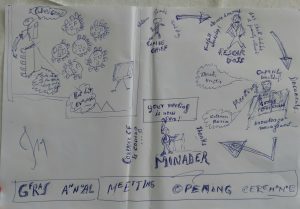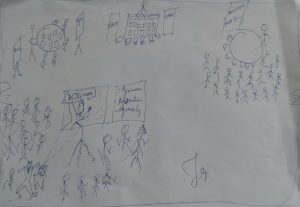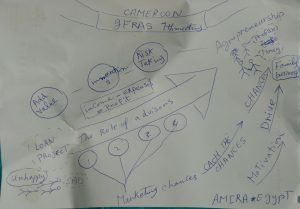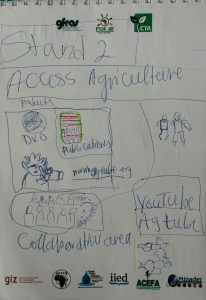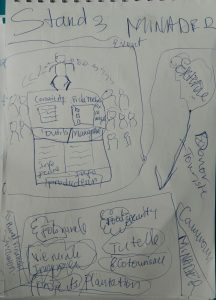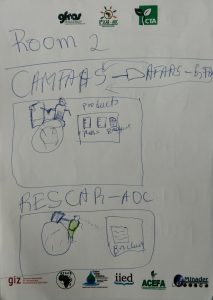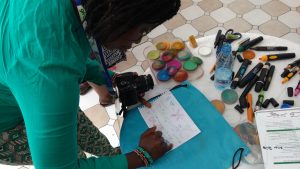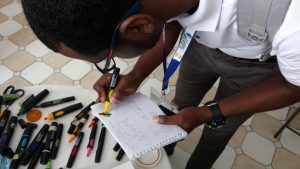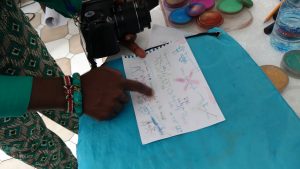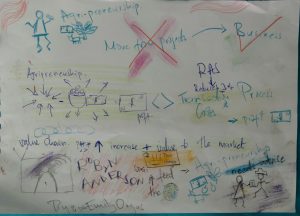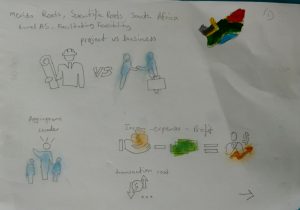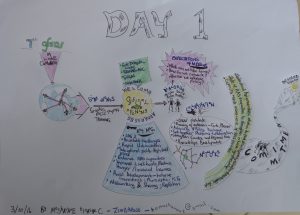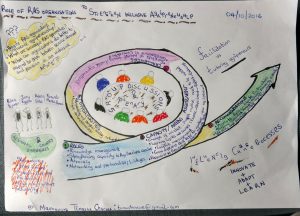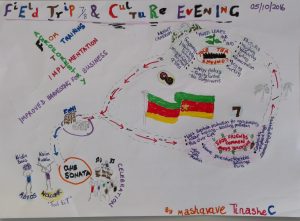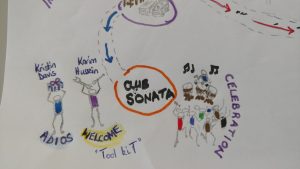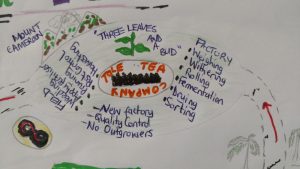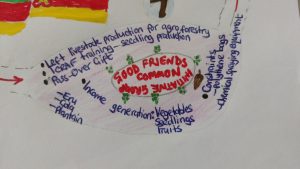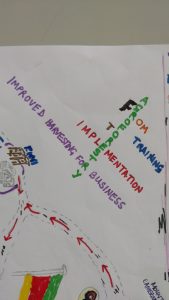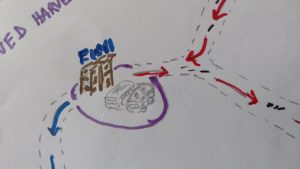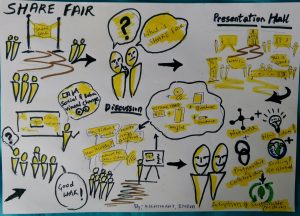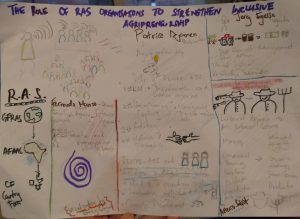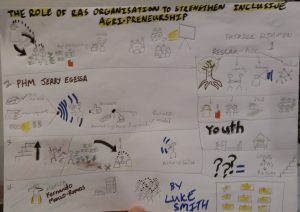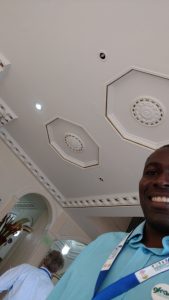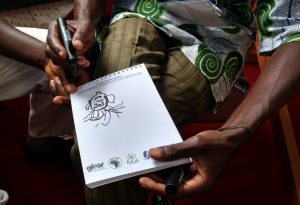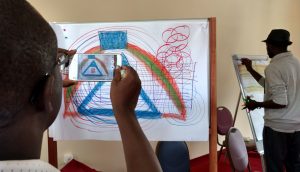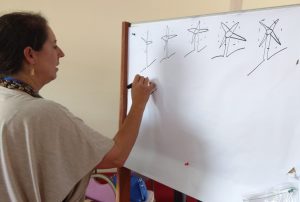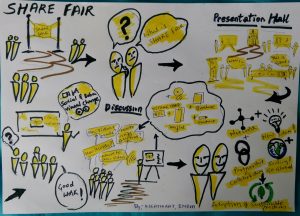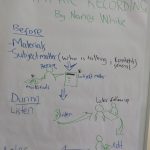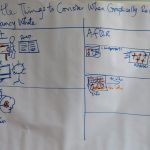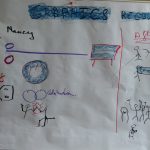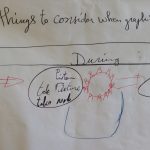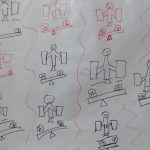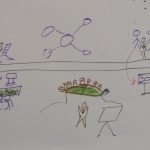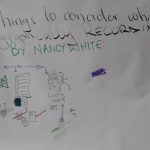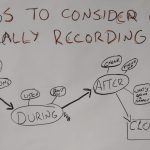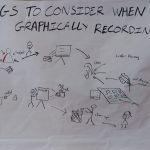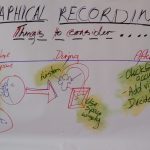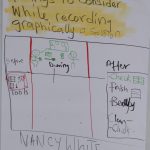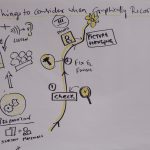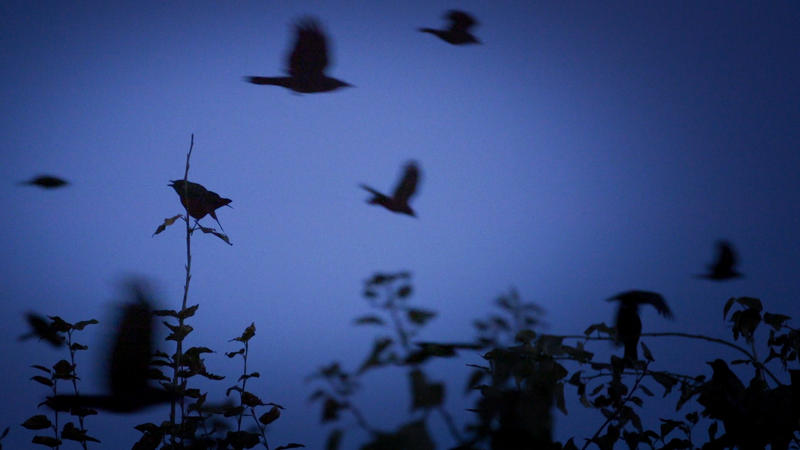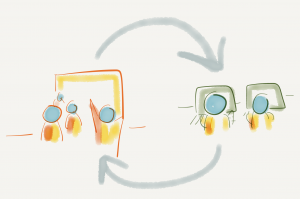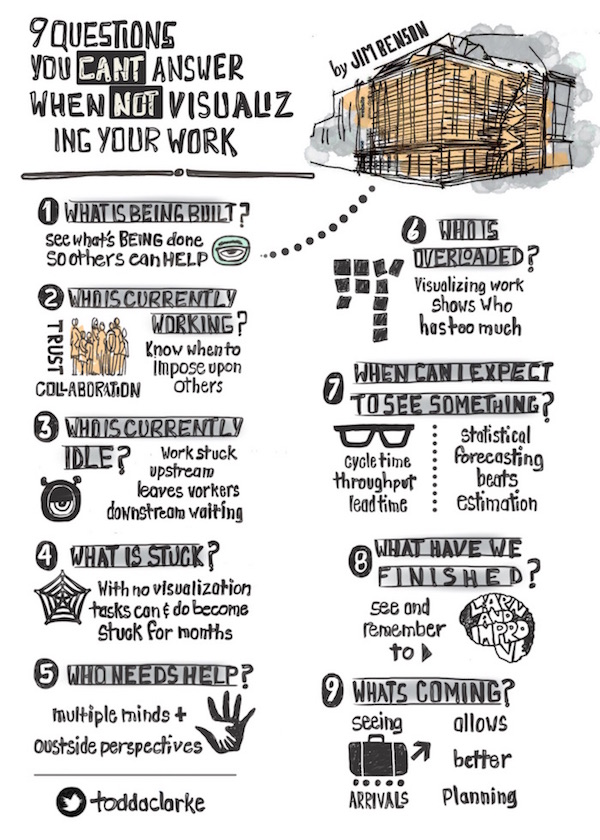Background: This is the second of three posts about some recent visual experiences at the 7th Annual GFRAS Meeting in Limbe, Cameroon, where I was invited as their graphic recorder! As I noted in Part 1, it is a huge investment of resources – theirs and mine – to have me there for the meeting, so I asked if I could also run a short “introduction to graphic recording” the before the event kicked off, and then we could have the participants fan out across the breakouts and field trips to capture sketch notes. This second post in the series shares a few stories and artifacts from the workshop participants about their sketchnoting at the meeting and after they returned home. How are they using their new skills? Part 3 will share the graphic recordings I did with a little reflection on my own process. When I publish #3, I’ll come back and link it here as well!
Unleashed across breakout sessions, field trips and plenaries, many of the participants of our short graphic recording workshop took their pens and notebooks to try and capture the essense of sessions as sketch notes. Remember: these people walked into the workshop with little or no sketchnoting experience. Just a fire in their bellies and a willingness to try.
The first experiments were just with pen, mostly on the small conference spiral note books. You can see the experimentation with how to organize the ideas on the paper and a great deal of courage focusing on the images, not just relying on text.
At one point after a plenary, a few folks stopped by my graphic recording station and we did some mini debriefs and talked about introducing color. The magic was instantaneous… (not that I don’t like black and white, mind you!). Click the images for a larger and fuller view!
By the end of the week, our intrepid team had introduced metaphors and ways to organize space on the page along with some clever extras.
But wait, this is not the end of the story! What happened after everyone has gone home? I have two stories to share already (and hopefully I will glean a few more.
Merida Roets, who was also our day 2 keynote and my wonderful roommate at the hotel, was already planning to offer her staff a brief graphic recording session upon her return to South Africa. (I’ll share the capture of her keynote in post #3). They may have wondered what Merida was up to, but she immediately applied her learning to her work with her project developing some learning materials for the South African Sugar Association. She shared an image with me as an example. (I can recommend Merida for both her intelligence and love of chocolate!)
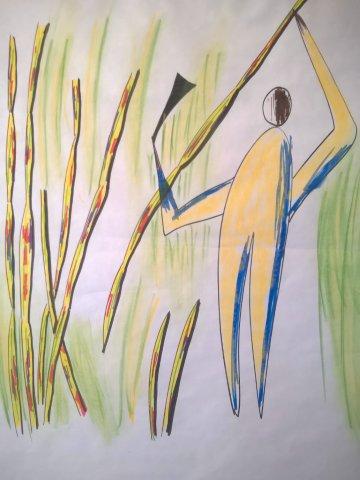
Finally, one of the workshop participants who was already deeply into visual practices for agricultural development, Luke Smith, who is the AgriEdutainment Officer & ICT Director of WhyFarm that originated the world’s Food Security superhero “AGRIman” as a way to engage younger folks in agriculture , wrote ” I have used the graphic facilitation method with some children in a workshop. I didn’t have all the materials required to execute they way I wanted too. I showed the children the basics as you showed us in the training. I then gave them the problem of how can we increase food production by 2050 and told them to use the icons, arrows, symbols to come up with a solution.
The children drew there ideas on a copybook page, I didn’t get time to take a photo as the session ran out of time . But I was amazing that some kids drew the ideas of doing farming underwater. I want to try this method again but with flip charts and markers etc. I will certainly capture the use of graphic facilitation the next time. ”

And for a bit of fun
